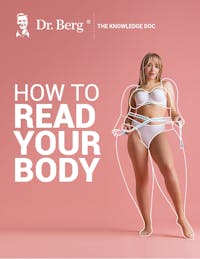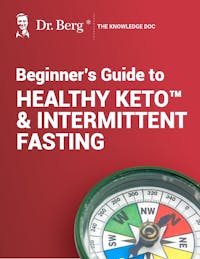What Do Dry Burning Eyes Mean?

How to Read Your Body
Learn to recognize common symptoms and uncover their underlying health issues
Understand the signs of nutrient deficiencies to manage your health
Explore the four metabolic body types and the core factors that influence them
Interpret your body's signals from head to toe to identify potential health concerns

How to Read Your Body
Learn to recognize common symptoms and uncover their underlying health issues
Understand the signs of nutrient deficiencies to manage your health
Explore the four metabolic body types and the core factors that influence them
Interpret your body's signals from head to toe to identify potential health concerns

How to Read Your Body
Learn to recognize common symptoms and uncover their underlying health issues
Understand the signs of nutrient deficiencies to manage your health
Explore the four metabolic body types and the core factors that influence them
Interpret your body's signals from head to toe to identify potential health concerns

How to Read Your Body
Learn to recognize common symptoms and uncover their underlying health issues
Understand the signs of nutrient deficiencies to manage your health
Explore the four metabolic body types and the core factors that influence them
Interpret your body's signals from head to toe to identify potential health concerns

How to Read Your Body
Learn to recognize common symptoms and uncover their underlying health issues
Understand the signs of nutrient deficiencies to manage your health
Explore the four metabolic body types and the core factors that influence them
Interpret your body's signals from head to toe to identify potential health concerns

How to Read Your Body
Learn to recognize common symptoms and uncover their underlying health issues
Understand the signs of nutrient deficiencies to manage your health
Explore the four metabolic body types and the core factors that influence them
Interpret your body's signals from head to toe to identify potential health concerns

How to Read Your Body
Learn to recognize common symptoms and uncover their underlying health issues
Understand the signs of nutrient deficiencies to manage your health
Explore the four metabolic body types and the core factors that influence them
Interpret your body's signals from head to toe to identify potential health concerns

How to Read Your Body
Learn to recognize common symptoms and uncover their underlying health issues
Understand the signs of nutrient deficiencies to manage your health
Explore the four metabolic body types and the core factors that influence them
Interpret your body's signals from head to toe to identify potential health concerns

Beginner’s Guide to Healthy Keto & Intermittent Fasting
Receive a step-by-step guide to starting Healthy Keto® and intermittent fasting
Learn about foundational principles and best practices for beginners
Get detailed visual guidance on portion sizes and meal composition
Discover how to set achievable goals and monitor your progress
Find practical tips for overcoming common challenges and staying motivated

Beginner’s Guide to Healthy Keto & Intermittent Fasting
Receive a step-by-step guide to starting Healthy Keto® and intermittent fasting
Learn about foundational principles and best practices for beginners
Get detailed visual guidance on portion sizes and meal composition
Discover how to set achievable goals and monitor your progress
Find practical tips for overcoming common challenges and staying motivated

Beginner’s Guide to Healthy Keto & Intermittent Fasting
Receive a step-by-step guide to starting Healthy Keto® and intermittent fasting
Learn about foundational principles and best practices for beginners
Get detailed visual guidance on portion sizes and meal composition
Discover how to set achievable goals and monitor your progress
Find practical tips for overcoming common challenges and staying motivated

Beginner’s Guide to Healthy Keto & Intermittent Fasting
Receive a step-by-step guide to starting Healthy Keto® and intermittent fasting
Learn about foundational principles and best practices for beginners
Get detailed visual guidance on portion sizes and meal composition
Discover how to set achievable goals and monitor your progress
Find practical tips for overcoming common challenges and staying motivated

Beginner’s Guide to Healthy Keto & Intermittent Fasting
Receive a step-by-step guide to starting Healthy Keto® and intermittent fasting
Learn about foundational principles and best practices for beginners
Get detailed visual guidance on portion sizes and meal composition
Discover how to set achievable goals and monitor your progress
Find practical tips for overcoming common challenges and staying motivated

Beginner’s Guide to Healthy Keto & Intermittent Fasting
Receive a step-by-step guide to starting Healthy Keto® and intermittent fasting
Learn about foundational principles and best practices for beginners
Get detailed visual guidance on portion sizes and meal composition
Discover how to set achievable goals and monitor your progress
Find practical tips for overcoming common challenges and staying motivated

Beginner’s Guide to Healthy Keto & Intermittent Fasting
Receive a step-by-step guide to starting Healthy Keto® and intermittent fasting
Learn about foundational principles and best practices for beginners
Get detailed visual guidance on portion sizes and meal composition
Discover how to set achievable goals and monitor your progress
Find practical tips for overcoming common challenges and staying motivated

Beginner’s Guide to Healthy Keto & Intermittent Fasting
Receive a step-by-step guide to starting Healthy Keto® and intermittent fasting
Learn about foundational principles and best practices for beginners
Get detailed visual guidance on portion sizes and meal composition
Discover how to set achievable goals and monitor your progress
Find practical tips for overcoming common challenges and staying motivated
Dry, burning eyes cause discomfort that can significantly impact daily activities and overall quality of life.
Learn about what it means to have dry, burning eyes and how with simple diet changes and lifestyle modifications, it's possible to alleviate symptoms effectively.
The Unseen Consequences of High Sugar Intake
When we think about the repercussions of consuming high amounts of sugar, weight gain and dental issues often come to mind. However, these are just the surface-level effects of consuming too much sugar. An often-overlooked side effect of a high-sugar diet is eye diseases.
A startling statistic reveals that over 50% of diabetics develop dry eyes, which is a condition associated with a range of eye diseases including retinopathies, cataracts, glaucoma, and macular edema.
The common thread linking diabetes and dry eyes is an inability to effectively regulate blood glucose levels due to insulin resistance or insufficient production.
An insightful study featured in The Ocular Surface Journal highlights how elevated glucose concentrations destabilize tear film stability, leading to an increased evaporation rate, which manifests as typical symptoms such as a burning sensation, redness, and blurred vision.
Sugar's Impact on Eye Health: A Deeper Dive
Beyond disrupting average tear production, thereby causing discomforting conditions like dry eyes, consistent consumption of excess sugars also poses other risks to ocular well-being.
For instance, nerve damage within the cornea, the transparent front surface responsible for focusing light onto the retina, could be a potential outcome of long-term exposure to heightened blood sugar levels, eventually resulting in complications ranging from neuropathy (nerve damage) up to even blindness if left untreated.
This underlines the importance of maintaining balanced blood glucose, which isn't merely crucial for overall wellness but specifically for preserving optimal ocular health.
It further emphasizes the need for dietary and lifestyle modifications geared towards healthier living, not only for those diagnosed with diabetes but for anyone consistently indulging in sugary diets.
Since chronically elevated blood sugars adversely impact bodily functions, including ones directly and indirectly related to ensuring comfortable vision, dry eye is one manifestation among many others.
Dry Eyes and Diabetes: An Unexpected Connection
High blood sugar levels can cause damage to the eyes, such as nerve impairment in the cornea, which disrupts average tear production and leads to dry eye disease. Over time, these high glucose levels may lead to nerve impairment in the cornea - the transparent front part of your eye.
This nerve injury disrupts average tear production, leading to symptoms like burning or even watery eyes as an overcompensation for the lack of lubrication.
Astonishingly enough, research indicates that more than half of diabetics develop dry eyes due to this imbalance in tear production.

Symptoms of Dry Eyes
The signs associated with dry eye conditions are diverse but often include discomfort similar to having something foreign lodged in your eye when nothing is present. This sensation can be quite unsettling for those who experience it regularly.
Apart from this feeling, other common indications involve redness or stinging sensations (eye redness), blurred vision (blurry vision), or overly teary-eyed responses as the body attempts to compensate for inadequate moisture by producing excess tears, which evaporate too quickly.
If you've been diagnosed with diabetes or elevated blood sugar levels previously and have started experiencing any combination of these symptoms regularly, then they could potentially be linked.
Addressing Insulin Resistance for Eye Health
Insulin resistance is a widespread health problem that can detrimentally affect many areas of one's well-being, including eyesight. When the body's cells become less responsive to insulin, it causes an elevation of blood glucose levels.
The cornea, the clear front part of your eyes, relies heavily on proper circulation. However, insulin resistance disrupts normal blood flow and affects nerve functions within the cornea.
This can result in problems such as decreased tear production, leading to symptoms like burning eyes or blurred vision.
Blood Flow: A Key Player in Tear Production
Your body relies on healthy blood flow to deliver essential nutrients and oxygen to different parts, including your eyes.
If you're experiencing insulin resistance due to high sugar intake, poor circulation could prevent these crucial elements from reaching areas like the cornea effectively.
The tear film coats our eyeballs every time we blink, nourishing our corneal cells and the lubrication needed for comfortable vision. Dry eyes often develop when tears evaporate too quickly or when insufficient amounts are produced by glands around the eye area.
When the nerves responsible for maintaining this delicate balance don't receive enough nutrition due to impaired circulation caused by conditions like diabetes, they may fail to do their job correctly.
A Proactive Approach Against Insulin Resistance
To address eye health issues related to insulin resistance, it's essential to tackle the root causes. This primarily involves making dietary changes and incorporating lifestyle modifications, such as regular exercise.
Numerous studies have shown that exercise can help improve control over circulating glucose levels, benefiting overall wellness and targeting factors that negatively impact our vision.
So, the next time you're tempted to indulge in sugary treats, remember the potential implications they might have, not just for your waistline but also for essential aspects of life, such as your ability to see clearly without the discomfort commonly experienced during episodes of chronic dryness in the surface layer that covers your entire visual field.
Dietary Changes for Better Eye Health
Adjusting your diet can significantly influence the health of your eyes, particularly in managing conditions like dry eye disease. The intake of appropriate nutrients could help address root causes, such as insulin resistance, that lead to this condition.
The Role of Vegetables in Eye Health
Including vegetables in daily meals is vital for maintaining good eye health. They are rich in essential vitamins and minerals that play a crucial role in safeguarding our eyes from diseases.
For instance, leafy greens contain lutein and zeaxanthin - two antioxidants found abundantly in healthy retinas.
Eating seven cups of vegetables daily might seem challenging, but remember you don't need to consume them all raw or at once. Mix some cooked veggies with each meal or blend them into smoothies throughout the day, ensuring a comfortable, vision-dry, eyes-free experience.
Understanding Fat Intake
Fats often get negative attention due to their link with weight gain and heart ailments.
However, not all fats have equal effects on the body. Good fats, like omega-3 fatty acids, present profusely in fish oils, chia seeds, and flaxseeds, providing nourishment for your body, including your tear film production, promoting a healthier tears evaporate process.
A study published by The American Journal of Clinical Nutrition suggests that higher dietary consumption of omega-3 fatty acids may reduce women's risk of developing dry eye symptoms.
Therefore, increasing fat intake can be beneficial, especially if you're dealing with symptoms related to high sugar levels and diabetes, causing a discomforting burning sensation, redness, blurry vision, watery feeling, etc.
Intermittent Fasting as a Tool Against Dry Eyes
The adoption of intermittent fasting can be an effective strategy in the battle against dry eyes. This eating pattern, which alternates between periods of eating and fasting, has been shown to help tackle insulin resistance.
Insulin is vital in managing how our bodies react to food intake. It's responsible for aiding cells in absorbing glucose from your bloodstream.
However, when you develop insulin resistance, your body's cells become less responsive to this hormone, making them unable to absorb glucose efficiently. Consequently, more insulin is produced by the pancreas, resulting in elevated levels within the blood circulation.
Research indicates that by enhancing sensitivity towards insulin, intermittent fasting could potentially improve metabolic health. Doing so may also aid tear production, alleviating discomfort associated with dry eyes, such as a burning sensation or blurred vision.
An Introduction To Intermittent Fasting
Understanding its various methods would be a beneficial first step if you're considering trying out intermittent fasting. The 16/8 method confines daily food consumption within 8 hours, while the rest of the day is dedicated to the fasted state.
Prioritizing the intermittent fasting method that aligns best with your lifestyle is crucial, along with taking into account any pre-existing medical conditions like diabetes or heart disease before initiating the regimen.
Harvard Medical School suggests consultation with healthcare professionals, especially when planning long-term adherence to these diets, particularly for those suffering from chronic diseases requiring regular medication administration.

Beyond Weight Loss: Additional Benefits Of Intermittent Fasting
In addition to weight loss benefits, intermittent fasting offers several other potential advantages.
Practical Steps to Alleviate Dry Eyes
In managing dry eye symptoms, intermittent fasting focuses on dietary and lifestyle modifications that target the root cause of this discomforting condition.
Overcoming Challenges in Implementing Dietary Changes
Replacing sugar with other, healthier options can be challenging since it's so prevalent in many meals today. Rather than relying on refined sugars, natural alternatives that don't have the same health risks are available.
Balancing meals with healthy fats and plenty of vegetables becomes paramount for maintaining comfortable vision. Greens provide vital nutrients for eye health while helping maintain clear vision by promoting overall wellness.
The Importance Of Healthy Fats In Your Diet
Contrary to popular belief, fat plays an integral role in our diets; it's necessary for hormone production, brain function, and even maintaining comfortable vision - including alleviating dry eyes.
Increasing fat intake could mean adding more avocados or liberating olive oil when cooking.
Avoid trans fats found commonly in processed food items as these types contribute towards inflammation, potentially worsening conditions related to tear film disruption.
Instead, focus on consuming healthier monounsaturated and polyunsaturated options like nuts, seeds, and fish rich in omega-3 fatty acids such as salmon, mackerel, and trout.
Beyond Diet - Other Lifestyle Changes for Healthy Eyes
Healthy eyes are not just about the proper diet. It's a holistic approach that includes lifestyle changes to maintain clear and comfortable vision - dry eyes.
Importance of Regular Eye Check-ups
Regular eye exams are integral to maintaining optimal eye health, especially if you have pre-existing medical conditions like diabetes or high blood pressure.
A regular eye exam can help identify pre-existing conditions that may increase the risk of developing dry eyes, glaucoma, or macular degeneration.
An annual check-up is recommended for individuals over 40 years old, those wearing glasses or contact lenses, and those with a family history of eye disease. Early detection through these routine checks helps prevent progression into more severe stages.
Avoiding Harmful Environmental Factors
Certain environmental factors exacerbate symptoms associated with dry eyes. Exposure to second-hand smoke, air conditioning systems, heaters, and wind - all cause tears to evaporate quickly from the surface of your eyes, leading to discomfort and blurred vision.
To find relief from these triggers, consider using humidifiers at home during winter months when indoor heating often leads to arid air environments.
Wearing sunglasses outdoors on windy days protects the tear film covering our eyeballs against evaporation caused by harsh weather elements.
Maintaining Good Hygiene Practices
Gentle hygiene practices around your sensitive ocular area prove beneficial, mainly if meibomian gland dysfunction causes you to develop persistent dryness due to its effect of disrupting oil production essential to keeping tears stable, preventing them from rapidly evaporating away.
A helpful technique to manage this condition involves applying warm compresses onto closed eyelids to help unblock obstructed glands, thereby improving the quality of tear fluid produced.
Colloidal Silver and Burning Eyes Treatment
When addressing issues with the eyes, some consider the potential benefits of using colloidal silver.
Colloidal silver, known for its antimicrobial properties, has been explored as a natural remedy for alleviating discomfort and irritation associated with various eye conditions, including pink eye.
While some believe in its efficacy, it's crucial to approach alternative treatments cautiously and seek professional medical advice. Consulting a healthcare provider before using colloidal silver for burning eyes or any eye-related concerns is essential to ensure safety and appropriate care for your eye health.
Conclusion
The discomfort of dry, burning eyes can significantly affect daily life and overall well-being. Understanding the underlying causes, such as high sugar intake and insulin resistance, is essential for effective management.
By making simple dietary changes, incorporating healthy fats and vegetables, and adopting lifestyle modifications like intermittent fasting, individuals can alleviate symptoms and promote better eye health.
Regular eye check-ups, avoiding environmental triggers, maintaining good hygiene practices, and seeking professional advice before trying alternative treatments like colloidal silver are vital steps towards managing dry, burning eyes and improving quality of life.
With proactive measures and a holistic approach, it's possible to find relief and maintain comfortable vision for the long term.
Previous blog
The Actual Cause of DiabetesNext blog
What Is Vitamin B4Tags

Popular
08/21/2024
55.7K views
02/23/2025
46.8K views
11/18/2024
281.1K views
03/18/2024
11/21/2022




